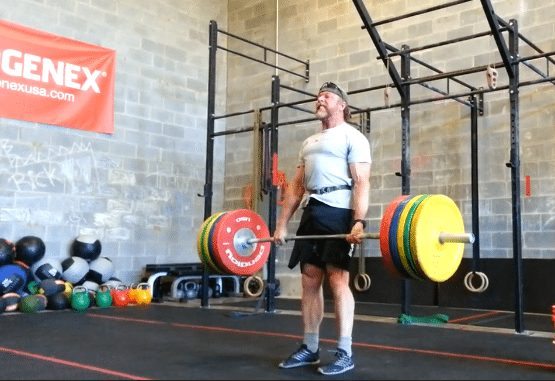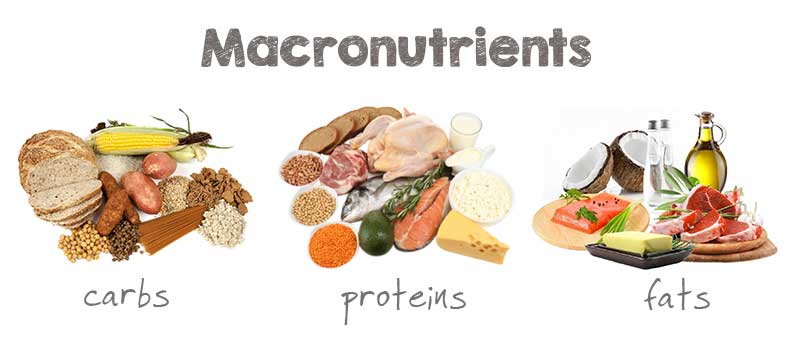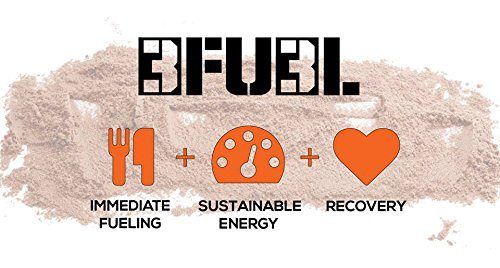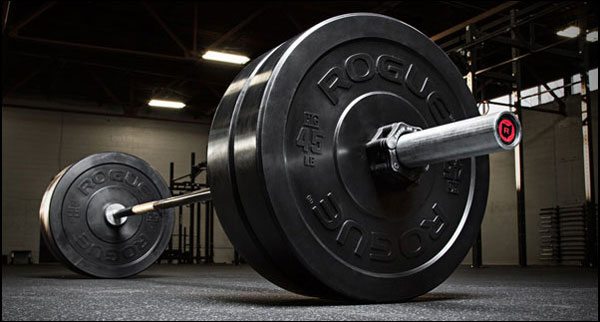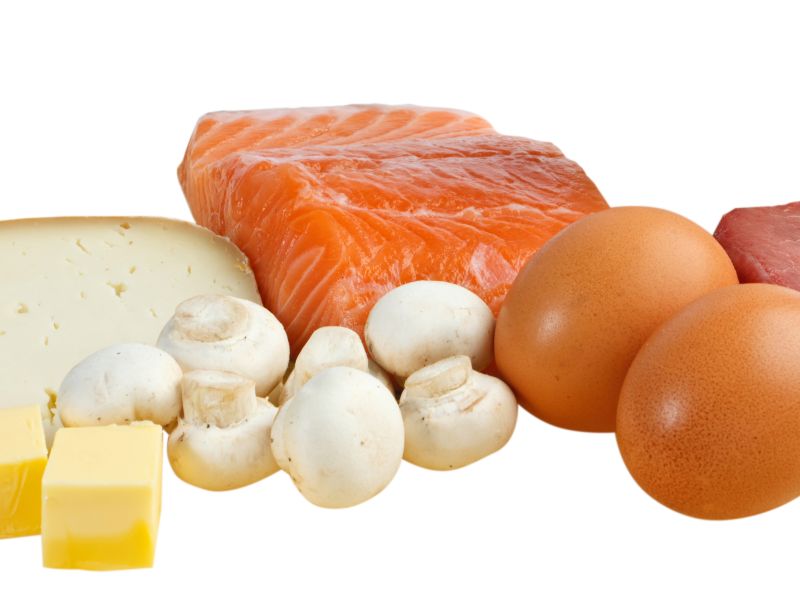noun
- a substance required in relatively large amounts by living organisms, in particular.
- a type of food (e.g., fat, protein, carbohydrate) required in large amounts in the human diet.
- a chemical element (e.g., potassium, magnesium, calcium) required in large amounts for plant growth and development.
ARE YOU DYING DURING WORKOUTS THAT YOU USE TO CRUSH, NOT GETTING LEAN, IS YOUR SLEEP DISRUPTED…LOST YOUR PUNCH HAVE YOU?
To perform your best in training or competition, and to recover afterwards, you need to be properly fueled. That means taking care of the ways and means in which your body produces the energy you need to compete at the highest level.
For short bursts of power, your body depletes its phosphocreatine supply to generate Adenosine Triphosphate (ATP), and contract your muscles as rapidly as possible. Your body can’t move without ATP being used – it’s the “product” your body purchases with metabolic “currency”. Four minutes after a maximal contraction, your body finally replenishes your phosphocreatine, and you’re ready for another maximal contraction.
But if you do multiple efforts at maximal intensity, and you’re not waiting four minutes, your body begins to migrate from the phosphagenic pathway towards the glycolytic pathway. At this point, glucose (blood sugar) is used to generate ATP. Soon afterwards, at about the 3-4 minute mark, your body begins to rely on protein, fat, and carbohydrates to continue paying for ATP. And while your muscles are busy converting your fuel into energy, they’re also producing waste products, like lactic acid, and causing you to sweat, losing methyl donors like Betaine, that are used to help create more ATP. It begins a vicious cycle, causing you to hit the dreaded “wall” – where your body goes into shutdown mode.
Carbohydrates are the most easily use macronutrient, in terms of generating enough ATP. But they only go so far. Even carb-loaded marathoners will hit the wall at about the 20 mile mark – which is less than two hours into their run. At that point, ATP depletion is so severe, that performance suffers dramatically. But consider a Strongman who competes all day, or a MMA fighter at a tournament, or a Crossfit Games athlete who has an entire weekend to get through…they’re getting themselves into a similar situation without even knowing it.
Running a Tough Mudder, Spartan Race, or Warrior’s Dash? You better have the right fuel in your body, because you can’t double fist energy drinks while you’re climbing a wall or jumping in a mud pit.
After half an hour, triglycerides (fats) begin to contribute almost as much (~50%) as carbohydrates to the body’s energy production, and after another hour, protein begins to make a substantial contribution as well (up to 15%). So if you’re relying on the wrong ratios of macronutrients, or not using the right micronutrients, you’re not going to be producing enough energy to maintain optimal performance. Think about it – if your body is relying on nearly 50% fat to sustain its efforts, why are you only drinking carbs during your training or competition? And if you’re going to burn protein, why isn’t your preworkout (or intraworkout) drink supplying you with any?
Most dietary supplements that rely on all three macronutrients will try to use a blend of fast acting carbs for a quick boost in blood sugar (*which is why you crash) and a fat to slow it down (*adding fats to a food reduces the glycemic index). We took the opposite approach – our fat is from coconut milk, mainly composed of medium chain fatty acids – which unlike regular fat, is a readily available source of energy. Our protein is high-quality, grass-fed, whey protein hydrolysate – an insulogenic protein that elevates blood sugar as well as carbohydrates. Plug for 3FU3L: 3FU3L’s carb on the other hand, is waxy maize hydroxypropyl distarch-phosphate, which provides literally hours and hours of energy; not only that, but helps the body use more triglycerides for energy, and helps reduce lactic acid. In other words, you’re getting three fuel sources with 3FU3L…because you need all three to sustain your performance.
3FU3L ultimately decided to add Betaine. If you’ve been paying attention, you’ll remember that you lose Betaine when you sweat, and it ultimately causes your body to produce less ATP, and therefore less energy. Supplementing with Betaine (*technically called Trimethylglycine) has been shown in numerous clinical studies to increase power, increase work capacity, enhance recovery, and allow test subjects to come back the next day and do it again.
I went to the 2013 Crossfit Games, Master’s Division (50+). I was training hard for about 6mos when I noticed my energy levels dropping off, body composition was changing with a notable loss in lean muscle mass, and I found it harder and harder to hit every training session with the required intensity and determination…”falling offline” prior to the completion of my workouts. I was eating vast quantities of food albeit my macronutrient ratios were not balanced enough – hindsight perspective. My post workout nutrition (PWO) was considered one of the “leading” products typically found at GNC or any run-of-the-mill supplement store. After some exhaustive research I stumbled across 3FU3L (3FUEL) which possessed a nutrient profile unlike any others. I bit the bullet and bought several bags and commenced to a personal guinea pig trial knowing that I was taking a great risk, but at that point what could I lose.
I started with a PWO shake as per recommendation on the bag: 2-scoops with ice and water ASAP after my workouts. Within a 5-day period I was “bouncing back”…felt like my old self. If memory serves me – training log not sitting in front of me – I started to use 3FU3L as a pre-workout drink (60-mins) for those efforts going beyond 20-mins and those workouts considered anaerobic alactic and and anaerobic lactic. My output increased, lean muscle mass returned and more, and the days of “hitting the wall” came to an abrupt end. My point is this stuff works! If you don’t believe me then try it yourself. The worst that can happen is nothing happens and you end up on the same gravy-train you started with. Since then I have added Rocket Fuel (Improved version of Unscared Coffee) as a pre-workout drink, which has taken me to an entirely different level.
All that being said, it’s incredibly frustrating to try to lose body fat and not get results.
Common opinion tells us that improving our bodies should be easy: Just eat less and work out more so you take in less energy than you burn. So why isn’t it working for you?
The reality is that in practice, fat loss is never as simple as we hope and there are lots of ways we can go wrong. In addition, studies show that many of the most accepted strategies for losing fat don’t work at all and they may even cause you to gain fat in the process.
Don’t worry. This article will point out several common, but often ignored, mistakes people make when trying to get lean and provide simple solutions for getting on track fast.
#1: You aren’t creating a sustainable energy deficit.
In order to lose body fat, you have to burn more energy than you take in every day. The typical mainstream way of doing is to cut calories and exercise so that you eat fewer calories than your body burns. It may lead to temporary fat loss, but it’s almost never sustainable because there’s a HUGE flaw to this plan:
When you cut calories, you lose both body fat and lean muscle, which means your resting metabolic rate (RMR) drops. The RMR makes up the bulk of energy you burn every day. Burning energy in addition to the RMR when working out is great, but the impact on total energy burned is fairly small compared to the total RMR.
Therefore, as your body shrinks day-by-day, your RMR decreases, and you burn fewer calories. The unfortunate thing is that that metabolic rate often slows down beyond the amount expected from decreased body mass because metabolic hormone levels get reduced.
The Solution: To create a sustainable energy deficit two things have to happen:
First, you must do exercise that promotes the maintenance of lean muscle mass. By maintaining lean mass, your RMR (resting metabolic rate) won’t drop as much as you lose body fat, and this type of exercise has additional metabolic benefits, which will be described in #2. You can lift weights, do interval training, or do both.
Second, you must eat the most nutrient-dense foods and favor protein because eating adequate protein promotes the maintenance of lean muscle and raises metabolic rate.
#2: You’re prioritizing cardio instead of intervals and lifting.
Research shows that cardio aerobic training is not only ineffective for fat loss, but can actually be detrimental. For example, in one study, subjects who did 40-minute cardio workouts for 3 months gained an average of 0.44 kg of fat, whereas a group that did cycle sprints lost 1.5 kg of body fat.
Or, in a survey of regular runners, the majority of them gained body fat over the 10-year study period. The only ones who did not gain body fat increased either their training intensity or weekly mileage significantly.
The reason people sometimes gain fat with is cardio is twofold: Often they reward themselves by eating more, and over the long term, cardio leads to the loss of lean mass, degrading metabolic rate. If you don’t concurrently eat less, or ratchet up how hard and long you train, you’ll gain fat.
The Solution: Sprint training and lifting are powerful tools that give you back considerably more in terms of fat loss and health than the effort required.
If your goal is fat loss, your number one priority should be strength training 4 days a week for one hour. Use mainly multi-joint exercises (squats, deadlifts, lunges, presses, and pulls), short rest intervals (10 to 60 seconds), with moderately heavy weights that you can do for 8 to 12 reps.
Priority number two should be on sprint intervals or strongman workouts 2 to 3 days a week for 30 minutes or less.
#3: You are sedentary even though you work out.
If you have a desk job or have to work at a computer all day, you might not realize that you’re leading a sedentary life even if you work out regularly. When you sit for long periods of time, insulin sensitivity and glucose tolerance drop, which means that your body isn’t burning energy effectively and is more likely to store it as fat.
Studies show that regular workouts can’t solve sedentariness. Sure, if you train frequently, you’ll be in better shape, have more muscle mass, and have a healthier metabolism than someone who never touches a weight.
But regular workouts probably aren’t enough if you’re spending 7 to 12 hours a day in a chair.
The Solution: Make a conscious effort to be as active as possible:
* Track your daily steps with a pedometer, making sure you get 10,000 a day.
* Get rid of your TV and limit your leisure screen time in favor of physical activity that is relaxing—try yoga or a martial art.
* Make a pact with friends and family to do social physical activity together.
#4: Your reason for exercising is to burn calories.
When people are motivated to work out in order to lose fat, they usually aren’t successful because they end up eating more calories afterwards.
In contrast, people who work out for other purposes, such as “for fun,” “to get strong,” or “to build muscle” don’t tend to compensate by eating more calories. Scientists think that people have become conditioned to reward themselves for physical efforts that they associate with weight loss.
Now, this does NOT mean that you shouldn’t work out if you want to improve your body. We’ve already talked about the importance of frequent activity and how lifting weights and sprints will promote fat loss by maintaining your RMR and improving your muscle mass. The point is to be aware of this pitfall so it doesn’t trip YOU up.
The Solution: Set performance-related goals rather than fat loss goals for your training. Know that the calories burned during workouts are a drop in your metabolic bucket compared to these other amazing benefits you get from exercising:
* Increased lean muscle mass and better bone strength from intense training.
* Improved insulin sensitivity and glucose tolerance for a healthier metabolism.
* Greater motivation to engage in other healthful behaviors that make you feel energized, strong, and lean.
Finally, be aware of your eating behavior and how workouts or life stresses influence it. Humans are amazingly good at rationalizing behavior that goes against their goals. Track your habits (food and water intake, sleep, and workouts) to get an honest picture of your behavior.
#5: Your carbohydrate intake is off.
Lower carb diet done the right way can help you lose body fat because they lead people to naturally eat fewer calories, thereby creating an energy deficit.
However, most of the popular lower carb diets aren’t robust to faults, which means that there are a lot of things that can go wrong with them. A few the biggest pitfalls include:
1) relying on processed/packaged food instead of real food,
2) lack of vegetables
3) lack of fiber and water
4) not being flexible enough to fit into a busy social life
5) low energy levels due to low glycogen stores
The Solution: Fortunately, many of these problems can be solved with a few basic guidelines.
Get your daily carb intake right. If you’re in shape and active but just want to lean up a bit, a carb intake as high 150 g/day can be ideal if you eat primarily lower glycemic whole carbs. But, if you’re sedentary and somewhat insulin resistant (if you have 15 or more pounds to lose), less than 50 grams of carbs a day from low-glycemic sources is ideal for fat loss because this will lead to the productions of ketones.
Get rid of refined carbs from your diet and replace them with fibrous carbs that are filling and packed with nutrients. Include a green vegetable in every meal and eat dark-colored fruits such as blueberries or blackberries to satisfy sweet cravings.
If poor sleep, slow recovery from training, or low energy are getting you down, try eating higher glycemic whole carbs such as starches (potatoes, sweet potatoes) and boiled grains (rice, millet, oats) after hard workouts to replenish muscle glycogen and reduce cortisol.
#6: You’ve decided to go the calorie-cutting route rather than the high-protein, lower carb route.
We’ve already talked about a bunch of reasons that slashing calories doesn’t work (you lose lean muscle, RMR drops, your metabolic rate downregulates), but the bad news goes even further. Cutting calories drastically (to the 1,200 to 1,500 a day range) requires you to fight off hunger with willpower.
Life becomes miserable quickly, and because fuel stores are low, you experience an increase in your stress levels because the hormone cortisol is elevated. Choosing a high-protein, lower carb diet can solve these problems and allow you to lose body fat with minimal pain and struggle.
The Solution: Plan every meal around a whole protein source such as fish, meat, poultry, Greek yogurt, or eggs. In addition to sustaining lean muscle, a higher protein intake has the following fat los benefits:
* It elevates your metabolic rate because the body burns more calories digesting protein than it does carbs or fat.
* It’s highly satisfying, reduces hunger, and leads people to eat fewer calories overall. A review of the issue found that for every 1 percent increase in protein intake, people naturally decrease calorie intake by between 32 and 51 calories daily.
* It helps you manage blood sugar and insulin, thereby decreasing cravings for sugar.
#7: You’re not eating enough dietary fat on a lower carb diet.
If you have previously been eating a lower fat diet, and decide to go low-carb but don’t increase your fat intake, you’re unlikely to feel very good. Many people feel very tired, sluggish, “off,” or have brain fog, and give up before their bodies can effectively adapt.
One thing that needs to happen when you go low-carb is your body must adapt to be able to burn fat instead of glucose. If you don’t adequately increase the fat you eat to offset the lack of carbs, energy production will be sluggish and you won’t be able to sustain your new way of eating.
The Solution: Chances are you need at least 50 percent of your calories to come from fat to make a low-carb diet work. The actual percentage will obviously vary based on carb and protein intake, but you absolutely want to make fat intake a priority.
Do this by eating fat at every meal, opting for fats from the following sources: Omega-3s from fish and organic meats, medium chain triglycerides from coconut and red palm oil, and monounsaturated fats from olives, olive oil, nuts, and avocados.
#8: You’re not getting enough sleep or have too much stress.
Our bodies rely on a cascade of hormones that regulate metabolic rate, stress, and when we eat and sleep.
Therefore, if part of the hormone cascade is disrupted by lack of sleep, too much stress, or skipped meals, our whole biorhythm can get thrown off in the following ways:
* Insulin sensitivity and glucose tolerance drop and the body shifts (or stays) in fat storage mode.
* People feel hungrier, and make poorer food choices, eating as much as 300 calories a day extra (due to
elevated cortisol).
* Both men and women suffer from lower growth hormone release since you experience the bulk of GH release
during sleep, and men experience an acute drop in testosterone when they are sleep deprived.
The Solution: Develop good sleep and stress-management habits.
Set a regular bedtime and follow it on the weekends.
Sleep in darkness and cover any electronic lights (a new study found that exposure to dim light at night leads to increased body weight and altered metabolism). Adopt a bedtime ritual and try meditation to reduce stress and improve hormone balance. Try these nutritional sleep aids if nothing else works.
#9: You have low vitamin D.
Vitamin D deficiency is consistently associated with greater fat mass in all ages, races, and both genders.
Raising vitamin D levels to a “sufficient” range above 30 ng/ml can lead to fat loss. For example, a new AJCN study found that in women who supplemented with vitamin D to raise their level above 32 ng/ml over the course of a diet and exercise trial lost significantly more body fat than those who took a placebo. Scientists think this is because adequate vitamin D is necessary for insulin sensitivity and parathyroid hormone function.
The Solution: It’s worthwhile to get your vitamin D level tested with a simple blood test (most doctors do it as part of your physical but you often have to ask to find out your level). Methods of raising D include getting regular sun exposure (without sunscreen or sunglasses), supplementation, and eating meat and dairy products (it’s hard to reach a sufficient D level through food alone).
#10: Something small that has big effects.
There are a lot of little things that can significantly influence your ability to lose body fat. Here are a few to watch out for:
Not eating enough vegetables. Vegetables are a godsend for anyone working to lose body fat for the following reasons:
Lower carb vegetables are a “free for all food” and you can eat as much of them as you want, which is helpful in reducing hunger and filling up your stomach.
Veggies provide water and indigestible fiber, which has been found to make people less hungry so they eat less.
Low-carb diets are particularly susceptible to lack of fiber since many people eliminate or reduce grains, which are a principal source of fiber.
Plants are some of the most nutrient-packed foods on the planet and they go a long way towards reducing inflammation in the body and preventing disease. They also provide key nutrients involved in metabolism like potassium and magnesium, both of which are reduced on lower carb diets.
Not drinking enough water. Staying hydrated is extremely important for fat loss because water is necessary for beta-oxidation, which is how the body burns fat as an energy source. In addition, if you’re eating a lower carb, higher protein diet adequate water will help reduce carbohydrate cravings because you automatically lose a significant amount of storage water as your body sheds its muscle glycogen stores. Not being honest with yourself. This applies to all your habits including how much you eat, how much sleep you get, and how hard you train. Not being honest with yourself, or blaming others for your lack of results is only going to set you up failure and to be miserable in the process.
Being honest with yourself will make things easier because you will finally be able to troubleshoot what’s really going wrong. If you tighten up your efforts and give it all you’ve got, the fat will start to melt away and you’ll get the physique you desire.
References
Journal of Nutritional Science and Vitaminology, Vol. 55 (2009) No. 2 P 120-125, Effect of Ingestion of Medium-Chain Triacylglycerols on Moderate- and High-Intensity Exercise in Recreational Athletes, http://doi.org/10.3177/jnsv.55.120
Salehpour, A., et al. A 12-Week Double-Blind Randomized Clinical trial of Vitamin D3 Supplementation on Body Fat Mass in Healthy Overweight and Obese Women. Nutrition Journal. 2012. 11, 78.
- Westman, E., et al. Low-Carbohydrate Nutrition and Metabolism. American Journal of Clinical Nutrition. 2007. 86, 276-284.
- Passmore, R., Swindells, Y. Observations on the respiratory quotients and weight gain of man after eating large quantities of carbohydrate. British Journal of Nutrition. 1963. 17, 331.
- Lane, S., et al. Caffeine Ingestion and Cycling Power Output in A Low or Normal Muscle Glycogen State.
- Medicine and Science in Sports and Exercise. 2013. Published Ahead of Print.
- Lefebvre, P., et al. Magnesium and Glucose Metabolism. Therapie. 1994. 49(1), 1-7.
- Phinney, Stephen. Ketogenic Diets and Physical Performance. Nutrition and Metabolism. 2004. 1(2).
Special thanks to editorial staffs at 3FU3L, The Poliquin Group, and OPEX. These three organizations have impacted my personal health and performance like no others.
- OPEX, http://opexfit.com
- Poliquin Group, http://poliquingroup.com
- 3FUEL, http://www.3fu3l.com
(Originally posted July 9th 2015 by Rick)

